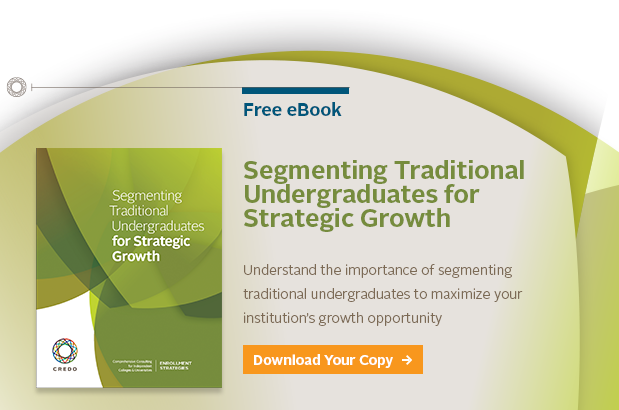
July 30 2010
In my previous blog post, I introduced the concept of predictive modeling in admissions work. In a nutshell, admission professionals can use predictive modeling to isolate those inquiries that are the most likely to enroll from those inquiries that are the least likely to enroll. In this posting, I am going to talk about selecting variables. At Credo, we typically model inquiry to enroll; consequently, the variables included in inquiry to enroll models are highly dependent on the types of information admissions officers collect at the inquiry stage.
Typically, information collected at the inquiry stage falls in one of four categories: source or referral code, major, demographic information, and contact information. Source or referral codes indicate how admission counselors found out the student existed and include such codes as referrals, name purchases, and campus visits. Major, of course, identifies the major or field of study in which an inquiry is interested. Meanwhile, demographic information might include the inquiry’s gender, race, or religious affiliation. You may collect additional information about your inquiries, but in our experience, these are the big four.
In predictive modeling, logistic regression analysis is used to investigate how the selected variables relate to an inquiry’s likelihood to enroll. For instance, a predictive model is capable of informing you if inquiries with a particular source code are more likely to enroll at your institution. Regression analysis provides information about the inquiry pool above and beyond what is obtained by looking at yield rates. Yield rates only provide information concerning the number of individuals enrolling from a particular category and do not necessarily equate to increased propensity to enroll; however, regression analysis is able to concretely identify those variables positively and negatively associated with an increased likelihood to enroll.
In the third and final blog posting of this series, I’ll discuss additional variables, not provided by the inquiry that can be used in predictive modeling and the benefit of using those additional data points.
Related Blog Posts
Recent Posts
- Richard Dunsworth, J.D., To Receive 12th Annual Courageous Leadership Award December 16 2024
- Meet the 2024 Credo Values Award Recipients August 27 2024
- What is Executive Coaching, Really? June 25 2024
- Credo & The Constructive Dialogue Institute Announce A New Partnership For Higher Education Leadership Development March 7 2024
- Celebrating Women And Gender-Diverse Learners & Leaders February 28 2024
Categories
- Strategy
- Leadership
- Student Success
- Student Success & Retention
- Enrollment
- Pivot
- Strategic Planning
- Leadership Development
- News
- Strategic Enrollment
- Campus Planning and Architecture
- Moving the Needle
- Data
- Research
- Retention
- Campus Master Planning
- Enrollment & Financial Aid
- Academic Programming
- Campus Planning
- Thriving
- Admitted Student Research
- Architecture
- Finance
- Advising
- Admissions




